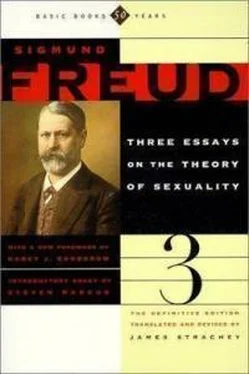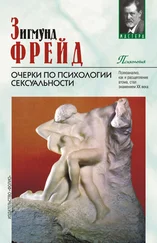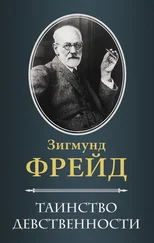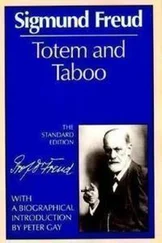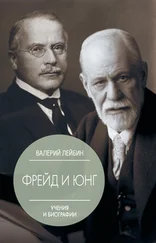( c ) They are occasionally inverted; i.e. , under certain external conditions, chief among which are the inaccessibility of the normal sexual object and initiation, they are able to take as the sexual object a person of the same sex and thus find sexual gratification.
The inverted also manifest a manifold behavior in their judgment about the peculiarities of their sexual impulse. Some take the inversion as a matter of course, just as the normal person does regarding his libido, firmly demanding the same rights as the normal. Others, however, strive against the fact of their inversion and perceive in it a morbid compulsion. [9] Such a striving against the compulsion to inversion favors cures by suggestion of psychoanalysis.
Other variations concern the relations of time. The characteristics of the inversion in any individual may date back as far as his memory goes, or they may become manifest to him at a definite period before or after puberty. [10] Many have justly emphasized the fact that the autobiographic statements of inverts, as to the time of the appearance of their tendency to inversion, are untrustworthy as they may have repressed from memory any evidences of heterosexual feelings. Psychoanalysis has confirmed this suspicion in all cases of inversion accessible, and has decidedly changed their anamnesis by filling up the infantile amnesias.
The character is either retained throughout life, or it occasionally recedes or represents an episode on the road to normal development. A periodical fluctuation between the normal and the inverted sexual object has also been observed. Of special interest are those cases in which the libido changes, taking on the character of inversion after a painful experience with the normal sexual object.
These different categories of variation generally exist independently of one another. In the most extreme cases it can regularly be assumed that the inversion has existed at all times and that the person feels contented with his peculiar state.
Many authors will hesitate to gather into a unit all the cases enumerated here and will prefer to emphasize the differences rather than the common characters of these groups, a view which corresponds with their preferred judgment of inversions. But no matter what divisions may be set up, it cannot be overlooked that all transitions are abundantly met with, so that the formation of a series would seem to impose itself.
*Conception of Inversion.*—The first attention bestowed upon inversion gave rise to the conception that it was a congenital sign of nervous degeneration. This harmonized with the fact that doctors first met it among the nervous, or among persons giving such an impression. There are two elements which should be considered independently in this conception: the congenitality, and the degeneration.
*Degeneration.*—This term degeneration is open to the objections which may be urged against the promiscuous use of this word in general. It has in fact become customary to designate all morbid manifestations not of traumatic or infectious origin as degenerative. Indeed, Magnan's classification of degenerates makes it possible that the highest general configuration of nervous accomplishment need not exclude the application of the concept of degeneration. Under the circumstances, it is a question what use and what new content the judgment of "degeneration" still possesses. It would seem more appropriate not to speak of degeneration: (1) Where there are not many marked deviations from the normal; (2) where the capacity for working and living do not in general appear markedly impaired. [11] With what reserve the diagnosis of degeneration should be made and what slight practical significance can be attributed to it can be gathered from the discussions of Moebius (Ueber Entartung; Grenzfragen des Nerven– und Seelenlebens, No. III, 1900). He says: "If we review the wide sphere of degeneration upon which we have here turned some light we can conclude without further ado that it is really of little value to diagnose degeneration."
That the inverted are not degenerates in this qualified sense can be seen from the following facts:
1. The inversion is found among persons who otherwise show no marked deviation from the normal.
2. It is found also among persons whose capabilities are not disturbed, who on the contrary are distinguished by especially high intellectual development and ethical culture. [12] We must agree with the spokesman of "Uranism" that some of the most prominent men known have been inverts and perhaps absolute inverts.
3. If one disregards the patients of one's own practice and strives to comprehend a wider field of experience, he will in two directions encounter facts which will prevent him from assuming inversions as a degenerative sign.
( a ) It must be considered that inversion was a frequent manifestation among the ancient nations at the height of their culture. It was an institution endowed with important functions. ( b ) It is found to be unusually prevalent among savages and primitive races, whereas the term degeneration is generally limited to higher civilization (I. Bloch). Even among the most civilized nations of Europe, climate and race have a most powerful influence on the distribution of, and attitude toward, inversion. [13] In the conception of inversion the pathological features have been Separated from the anthropological. For this credit is due to I. Bloch (Beiträge zur Ätiologie der Psychopathia Sexualis, 2 Teile, 1902–3), who has also brought into prominence the existence of inversion in the old civilized nations.
*Innateness.*—Only for the first and most extreme class of inverts, as can be imagined, has innateness been claimed, and this from their own assurance that at no time in their life has their sexual impulse followed a different course. The fact of the existence of two other classes, especially of the third, is difficult to reconcile with the assumption of its being congenital. Hence, the propensity of those holding this view to separate the group of absolute inverts from the others results in the abandonment of the general conception of inversion. Accordingly in a number of cases the inversion would be of a congenital character, while in others it might originate from other causes.
In contradistinction to this conception is that which assumes inversion to be an acquired character of the sexual impulse. It is based on the following facts. (1) In many inverts (even absolute ones) an early affective sexual impression can be demonstrated, as a result of which the homosexual inclination developed. (2) In many others outer influences of a promoting and inhibiting nature can be demonstrated, which in earlier or later life led to a fixation of the inversion—among which are exclusive relations with the same sex, companionship in war, detention in prison, dangers of hetero–sexual intercourse, celibacy, sexual weakness, etc. (3) Hypnotic suggestion may remove the inversion, which would be surprising in that of a congenital character.
In view of all this, the existence of congenital inversion can certainly be questioned. The objection may be made to it that a more accurate examination of those claimed to be congenitally inverted will probably show that the direction of the libido was determined by a definite experience of early childhood, which has not been retained in the conscious memory of the person, but which can be brought back to memory by proper influences (Havelock Ellis). According to that author inversion can be designated only as a frequent variation of the sexual impulse which may be determined by a number of external circumstances of life.
The apparent certainty thus reached is, however, overthrown by the retort that manifestly there are many persons who have experienced even in their early youth those very sexual influences, such as seduction, mutual onanism, without becoming inverts, or without constantly remaining so. Hence, one is forced to assume that the alternatives congenital and acquired are either incomplete or do not cover the circumstances present in inversions.
Читать дальше
